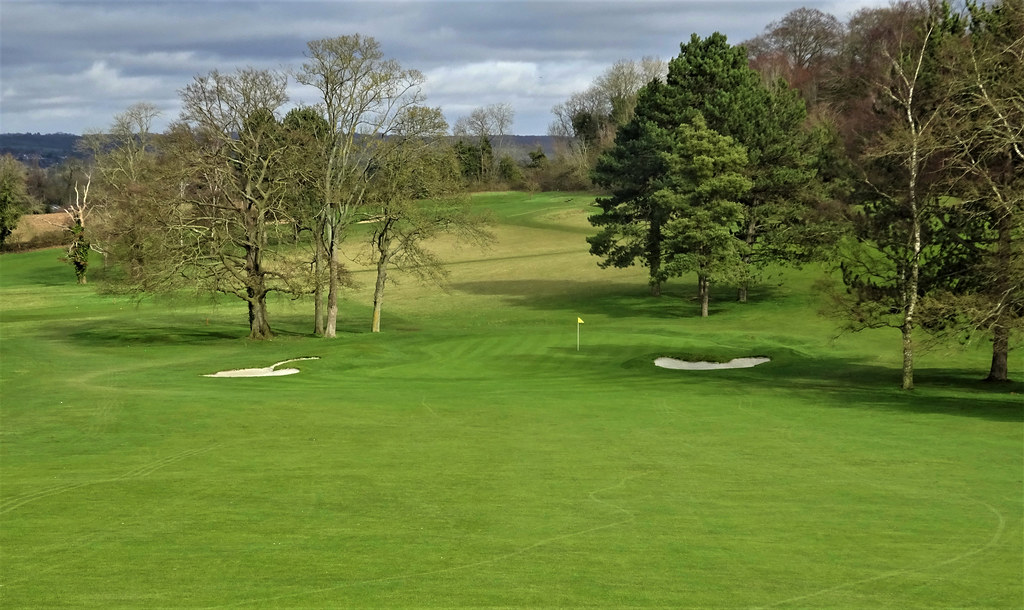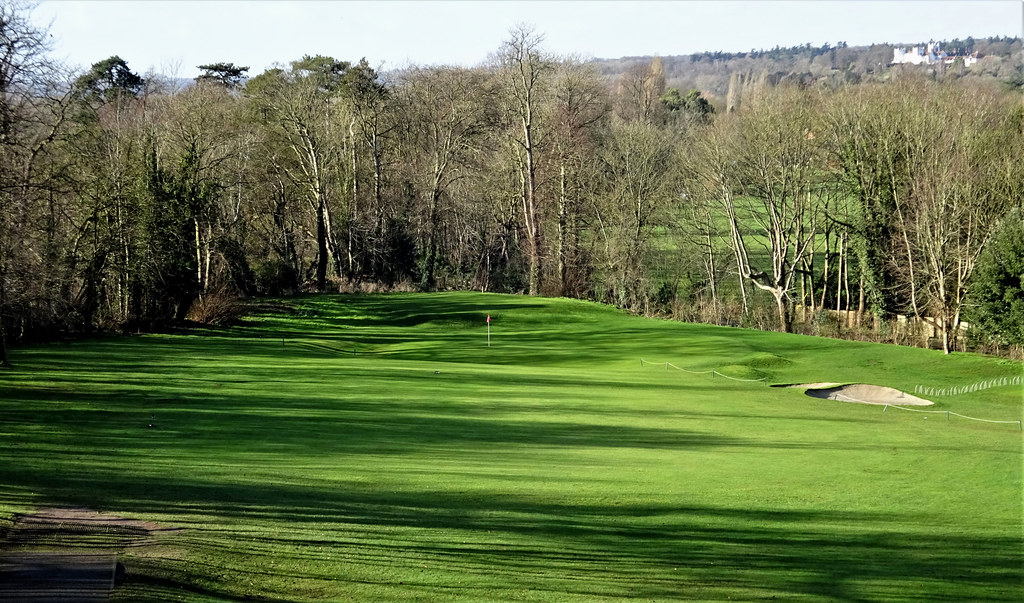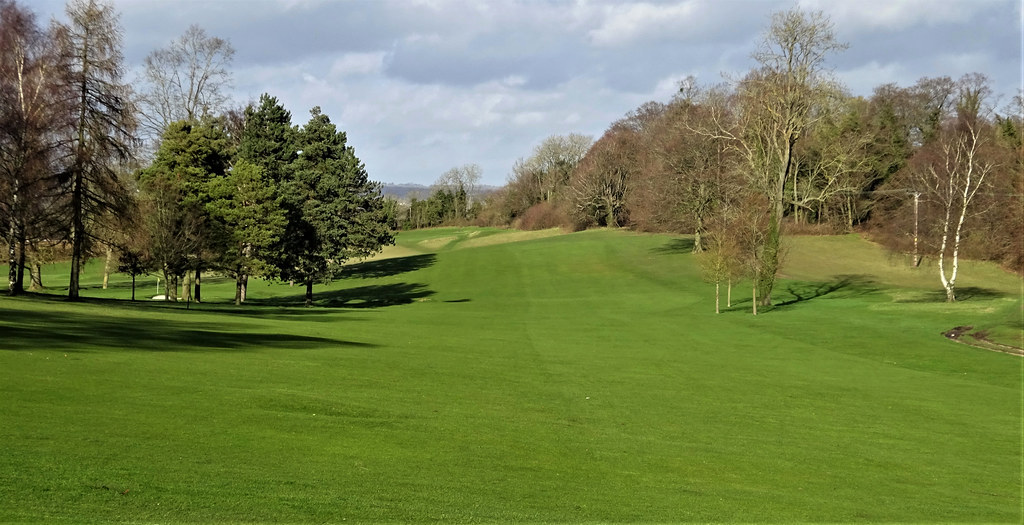
As was often the case for English courses designed around the turn of the century, the choice of architects was among a trio of HS Colt, Willie Park Jr or Herbert Fowler. Having designed nearby Huntercombe and Sunningdale it should come as no surprise that double Open champion Willie Park Jr was selected to lay out Temple in 1909. The course was originally called Temple Links because it was designed to play as an inland links and the land was previously owned by the Knights Templar. Despite modern technology, the presentation of Temple is still characterized by the season. Being located on chalk downland the course does feel somewhat similar to a links and the commanding views of the Thames Valley surely gives Temple a sense of place that is rarely matched.
The Oppenheimer father-son duo reigned at Temple as a benevolent dictatorship for several decades. The younger Oppenheimer was a fine golfer and captained the 1951 Walker Cup side which was defeated at Royal Birkdale. Oppenheimer was also responsible for hiring the best British golfer of the day, Sir Henry Cotton, as the club's professional. Cotton believed the turf at Temple was outstanding. However, as was the case for many British clubs, a watering system was installed in the 70s. At the time, the implications of this modern convenience weren't totally understood. The heavy use of water and fertilizers altered the character of the course from downland to more of a parkland course. Some 20 years later and thanks to a forward looking board in the early 90s, Temple became a leader in promoting sustainable golf which aims to encourage fine grasses to prosper by dramatically reducing fertilizer and water usage. The story of this change in course management culture is chronicled in Confessions of a Greens Chairman by Malcolm Peake, the former Greens Chairman.
The order of the day at Temple is balancing the long ball against the lay of the land. Many tee shots require the player to work down or hold shots into a slope. Keeping the rough fairly light and the fairways broad encourages this style of play, but shots can leak at an alarming rate if the proper angle of approach isn't achieved in firm conditions.
As this photo of the 1st depicts, the style of golf at Temple is often wide open off the tee with the main defenses being the hilly terrain, wind and the odd bunker.

#2 is a long par 4 which works it way back up the hill.

One aspect of very wide and hilly fairways which can be overlooked is trying to gauge distance. The 3rd demonstrates this need to estimate the yardage accurately. Its difficult to ascertain how far the bunker on the right is from the tee or even if one should be taking it on.

It is on approaches like this which in firm summer conditions would cause all sorts of trouble. I am not sure if it is better to approach from left or right. From the left we can use the hill, but if over or under hit, a bunker awaits. From the right we can see all the trouble, but our angle is compromised. Pick your poison.

This angle shows how the right bunker eats into the green. Generally speaking, the bunkering at Temple is effectively used and attractive.

The club is in the process of upgrading the bunkers. While some look quite different today, these two seem to be virtually the same and in the same location.

#4 is a medium length par 5 with an interesting green - as all the greens at Temple are. The fore bunker is well short of the green.

It is by the 5th that Temple worked its magic on me. This uphill par 3 green can be described as a saddle. The narrow green falls toward the front and rear with the apex near the middle.

The 6th has another superbly placed bunker making it imperative to stay up the left side of the fairway. Many of the holes at Temple are about the approach shots. One needs to work the ball into position off the tee even though there isn't often an immediate penalty for loose shots.

The drivable par four 7th is frought with danger down the low right side of the fairway and has a well protected green. From behind the green the reader gets an inkling of the severely sloped fairway.

I couldn't help but investigate the area this curious sign pointed toward. Turns out its code for ladies loo!

More flotsam and jetsom.

A closeup of the sign. The referenced loss of life occurred very near the course at Pinkney's Green when a Halifax bomber caught fire and blew up in the sky.

A longish par 3, the 8th is the first of THREE 200+ yard short holes. There is a clear signal to the golfer that the play is to come in from the left.

Temple features a handful of greens which have sharpish tiers. One such example can be seen on the 8th just right of the pin.

The side finishes with a terrific longish par 4 sweeping left along the boundary of the property. The drive feels much more constrained than previous holes as trees squeeze the fairway on the right.

There is no space to miss left and the natural left slope of hole often won't kick shots back onto the green.

The putting surface oddly breaks toward the right (left in this photo)!

The back 9 opens with what is without a doubt the most unique blind par 3 I have ever come across. When I first saw the hole I thought it was a long par 5 (see green to the left). Then we discovered another set of tees further up and decided to investigate by looking at the card. It is hard to believe there is a green tucked out in that field, but there is most certainly one about 235 yards out.

In a strange sort of way, the hole reminds me of a macro version of putting into a hole. One blasts a shot out there and hopes it collects into the completely blind bowl. I can imagine many not liking this hole, but it is akin to sprouts. There is no use in complaining. The damn things are on the plate so they must be eaten.

The bunker was removed. While the course played incredibly dry, with so much winter (2019-20) rain, it is asking too much for there to be no standing water in a bowl at least 15 feet deep.

The 11th is a corker down n' up two-shotter which signals a change of pace. On the front nine, the golfer is generally requested to position drives correctly. On much of the back nine there is a demand for accuracy off the tee due to the increased presence of trees. Even with a wedge in hand this shot can intimidate as one wants to keep the ball below the hole. Amongst a sea of interesting greens, this is one that is viciously sloped.

An older photo reveals the different bunkering. The dull new style affords more space for the run up shot.

The next is a very reachable par 5, but the kick down to the left near the green is very severe so it may not always pay to be aggressive with the second. I like how the green juts past the left bunker. It is an excellent way to challenge the player for ball control rather than distance - a trait I enjoy in par 5s. Looking toward the tee. There are two bunkers in the right (left in photo) shadows.

The 13th is an interesting short one-shotter which yet again tests exact yardage control. The hole is more uphill than it appears in the photo. Once again, the simplified bunkering allows for more space to run a shot to the green.

Previous bunkering.

The 14th is an odd hole. Out of nowhere we have an incredibly narrow hole down a tunnel of trees. Still, the green complex is good.

Sometimes there is such a difference between tee placements that it can alter the nature and quality of a hole. The 15th is one such incidence. From the back tee one has to hit a banana-ball cut into the hill just to hold the fairway. From the daily tee one has to hit well up the left and hold on. Either way, this is a hole I don't much admire. The last par 3, and the third at over 200 yards, is flat, obscured and quite difficult. There is an opening on the high side of the green which if used leaves a nasty putt down the hill. The final two holes revert back to the earlier, more open character of the course and they are the better for it. #17 is cracker which legs hard left, but the fairway down in the valley kicks balls right. This is one tough hole made more so by a difficult sloping left to right green. The hole also shows off the valley below 18 green and how much better it would look if most of the trees were cleared.
Temple finishes in a friendly way with a drivable par 4 if one can keep the drive rolling toward the target rather than slipping down into trees below the green. The short right bunker and shaping has been done since my previous visit.

The two tier green can create some extremely elusive hole locations.


Behind the green.

Maxing out at about 6300 yards, many will dismiss Temple as old-fashioned, but such courses have their place in the landscape of golf. Temple has the virtues of being playable for all and an equal balance of challenge, beauty, fun and affordability. I am especially impressed by the course drainage. I can easily see Temple "packaged" with Huntercombe and Oxford as a pleasant three day trip that wouldn't break the bank. 2020
Ciao